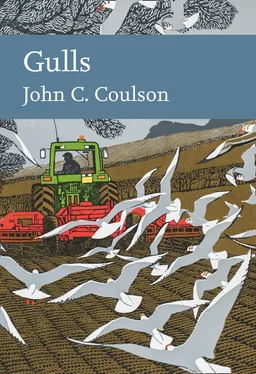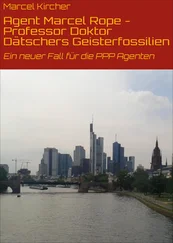The BTO Winter Gull Roost Survey in 2004 estimated that more than 1.6 million Black-headed Gulls were using winter roosts in the United Kingdom and Northern Ireland., and since the total did not include all winter roosts, there are probably more than 2 million individuals wintering here. This number can be compared with 280,000 breeding birds in the United Kingdom and Northern Ireland, which with immatures added comes to about 360,000 individuals. As most of these remain here in winter, it suggests that some 77–82 per cent of wintering Black-headed Gulls recorded in 2004 had moved here from the Continent. Gabriella Mackinnon and I obtained a comparable figure of 71 per cent, derived from ringing recoveries up to 1980 ( Fig. 26). Both percentages are rough estimates, but it is clear that a major proportion of the wintering Black-headed Gulls in Britain and Ireland originate from mainland Europe. Without new estimates, it is not known whether these numbers from the Continent have declined in more recent years as a result of the relatively mild winters.
Some readers may find it strange that, despite the satisfactory status and abundance of the Black-headed Gull as a breeding species in Britain, it has been Amber-listed here since 2015 as a species of conservation concern. This is based on the belief that numbers of wintering Black-headed Gulls in Britain have decreased by 33–50 per cent over the last 25 years, based on counts at winter night roosts. Since the British breeding numbers do not appear to have reduced ( here), a possible explanation is that a major decline has occurred in northern Europe – the area from which many of the British wintering gulls originate. However, there is little evidence of this apart from Denmark. An alternative explanation for the decline in winter numbers in Britain is that more individuals are remaining on the European mainland during the milder winters encountered in recent years. A preliminary analysis of recent winter ringing recoveries of Black-headed Gulls marked on mainland Europe suggests that the change of wintering areas is more likely to be the explanation. If this is correct and the species is not declining appreciably in Europe as a whole, but is modifying its wintering areas, then is it really a matter of conservation concern? In contrast to the assessment in Britain, the International Union for Conservation of Nature (IUCN) still regards the Black-headed Gull worldwide as a species of Least Concern.
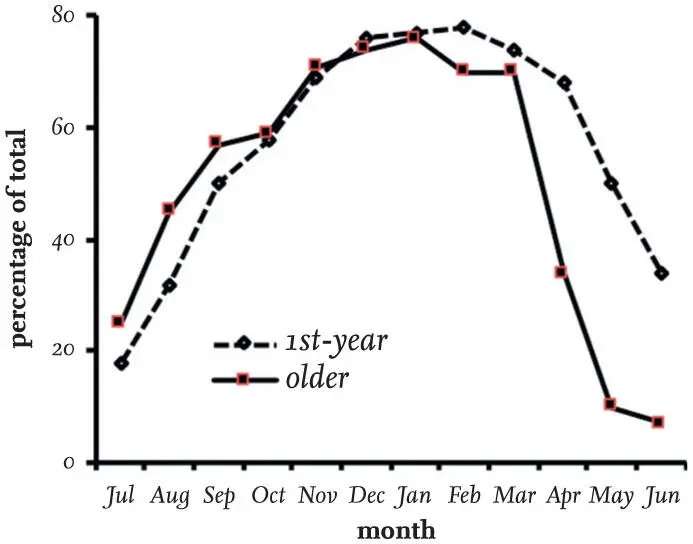
FIG 26. The percentage of Black-headed Gull recoveries reported in Britain and Ireland in each month that were originally ringed in mainland Europe. Note the trend for first-year birds to return to the Continent later. The recoveries of a few Continental birds in May and June may represent rings reported some time after finding.
Arrival of wintering birds
The numbers of Black-headed Gulls arriving in Britain and Ireland for the winter boosts the breeding season population by a factor of about four. These visitors come from a wide range of countries in northern Europe, with most starting their journey at locations around the Baltic Sea ( Figs 27and 28). Their arrival is spread over several months, from late July to early November (see Fig. 26).
The countries of origin of Continental Black-headed Gulls visiting Britain varies slightly with their final destination, with birds flying south-west or west to reach their wintering area ( Figs 27and 28). The exceptions are individuals reared in Iceland, some of which winter in Scotland and Ireland, but most of which avoid England and Wales. Other Black-headed Gulls reared in Iceland have been recovered from the east coast of North America, a route apparently taken by all of those reared in Greenland, although this wintering area is totally avoided by birds breeding in mainland Europe and in Britain.
Fig. 29shows the number of recoveries of foreign-ringed Black-headed Gulls in Britain and Ireland for each month of the year up to 1985 in relation to those reported monthly from December to February, a period during which it is assumed that all individuals have arrived at their wintering areas. An appreciable proportion of foreign adults, possibly mainly failed breeders, arrive in Britain during July, but only a few young of the year have crossed the North Sea by the end of the month. A small proportion of first-year individuals reared abroad remain in Britain in the following summer, having failed to return to the Continent in the spring. These birds, entering their second year of life and already in Britain in July, are joined by more similar-aged immature birds moving here from the Continent.
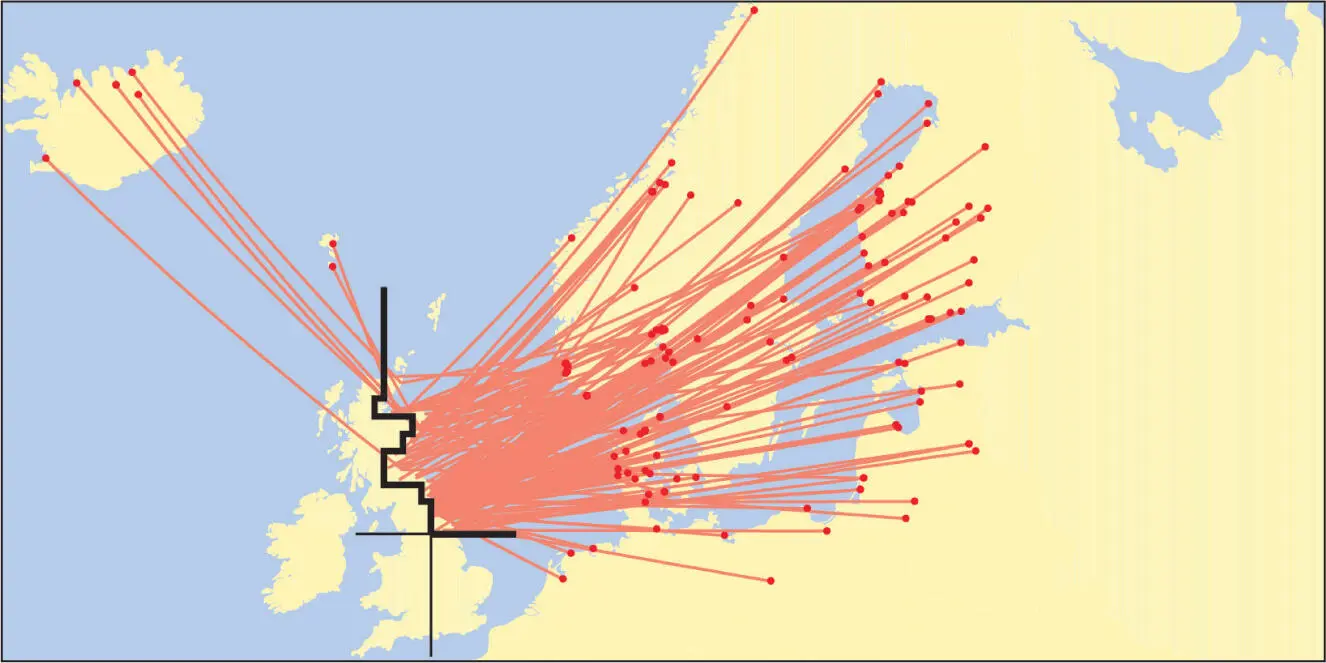
FIG 27. Black-headed Gulls ringed in winter in north-east Britain (to the right of the thick black line) and recovered abroad in a subsequent breeding season. Note the five Iceland recoveries. Reproduced from The Migration Atlas (Wernham et al. 2002), with permission from the BTO.
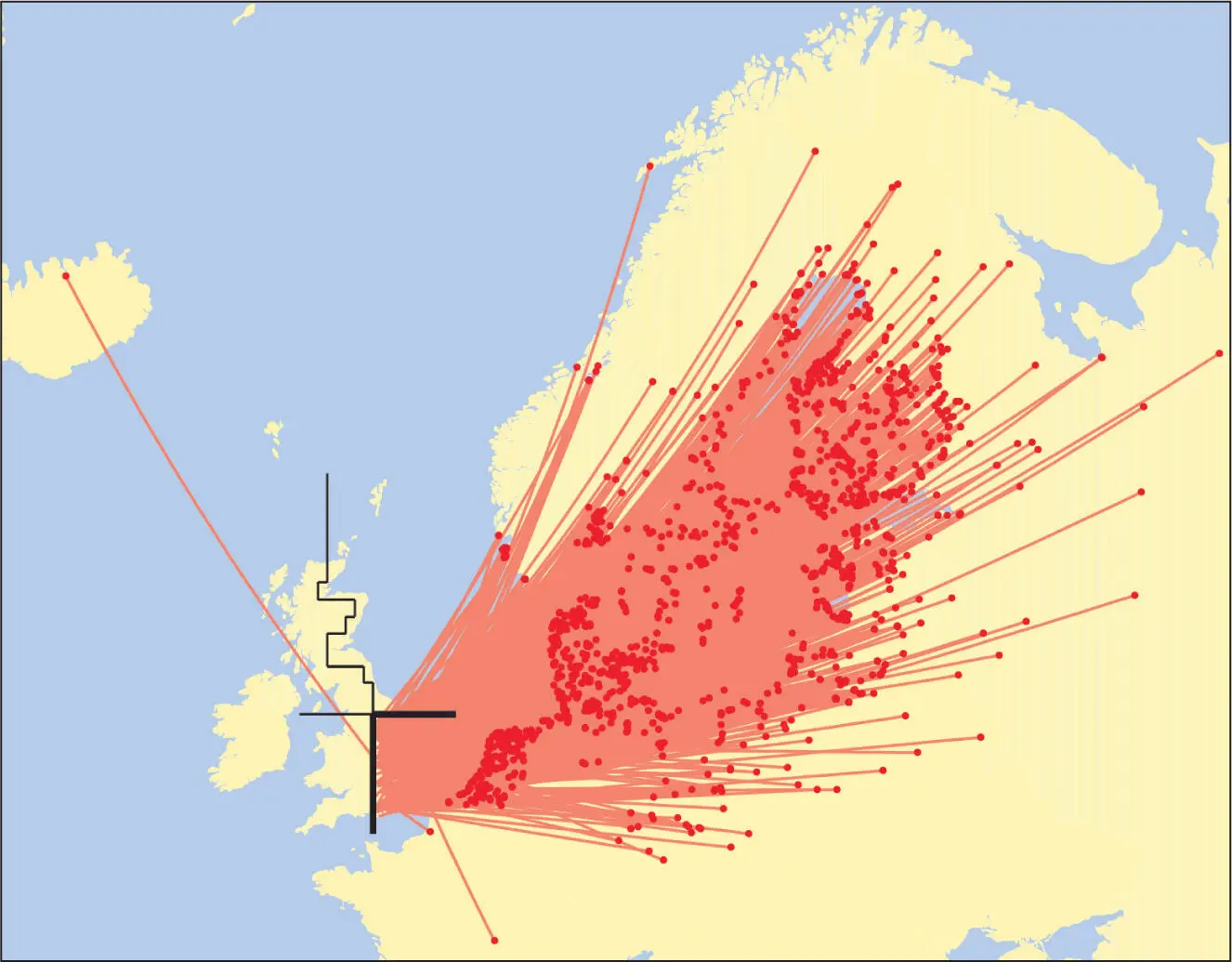
FIG 28. Black-headed Gulls ringed in winter in south-east Britain (to the right of the thick black line) and recovered abroad in a subsequent breeding season. Note the single Iceland recovery. Reproduced from The Migration Atlas (Wernham et al. 2002), with permission from the BTO.
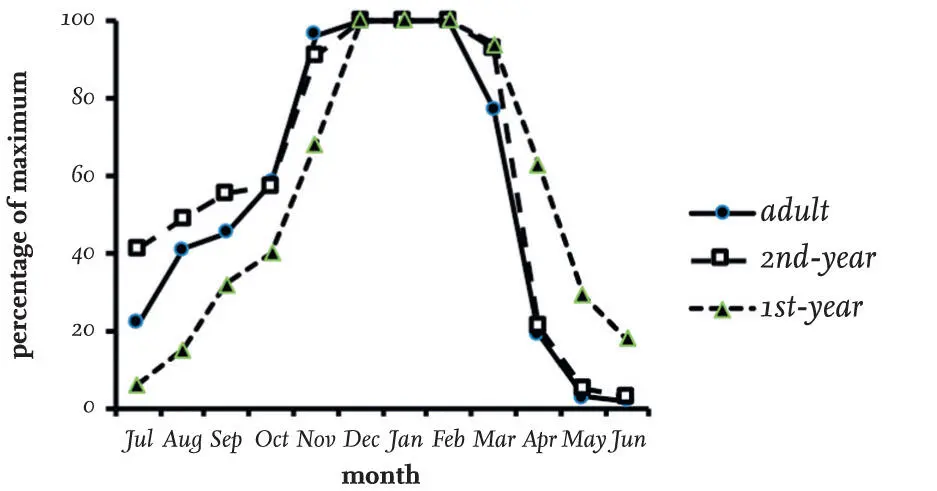
FIG 29. Recoveries in Britain and Ireland of Black-headed Gulls ringed in mainland Europe expressed as a percentage of the monthly recoveries between December and February. Note the high proportion of birds entering their second year of life (which moult early) reported in Britain in July, and the late departure of first-year birds in spring, with a few apparently remaining in Britain during the summer.
Numbers of all ages cross to Britain in August. By the end of that month, about half the adults that winter here have already arrived, but only 15 per cent of first-year birds have arrived. The early movement from countries bordering the Baltic Sea perhaps reflects the less favourable feeding conditions there. For example, the small tidal changes in the Baltic markedly restrict the extent of inter-tidal areas available for foraging, while the warmer and drier continental weather makes earthworms less available there in late summer.
There is evidence of a lag in new adult arrivals in Britain in September, probably because most adults are still completing their moult and growing their longest primaries. The lack of, or reduction of, these long feathers must impair their ability to make long flights. A second peak of arrival occurs in November, and by the end of that month most of the adults that winter here have arrived, apart from a few birds that possibly turn up in December. The maximum numbers of Black-headed Gulls are present in Britain for only three months, from December to late February.
The timing of immigration of first-year and adult Black-headed Gulls in autumn to Britain depends on the country of origin. Dates after 1 July by which the first 25 per cent of recoveries of young birds and adults from abroad are recovered have been used as an index of the arrival times of first-year and adult Black-headed Gulls from different countries in Europe ( Table 11). In general, adults and young birds arrive on different average dates, but this is not constant for each country of origin and varies by more than 60 days. Young birds arrive earlier than adults from countries closer to Britain, but the reverse applies for those from more distant countries. This suggests that first-year birds start their migration earlier than adults but move much slower, perhaps making a series of short journeys interspaced with stopovers at rest areas lasting a number of days. In contrast, adults appear to make much longer flights to their wintering area and arrive in Britain from European countries at less variable dates. The interpretation of the trend line in Fig. 30suggests that first-year birds on migration take about 43 days longer than adults to travel 1,000 km.
Читать дальше
